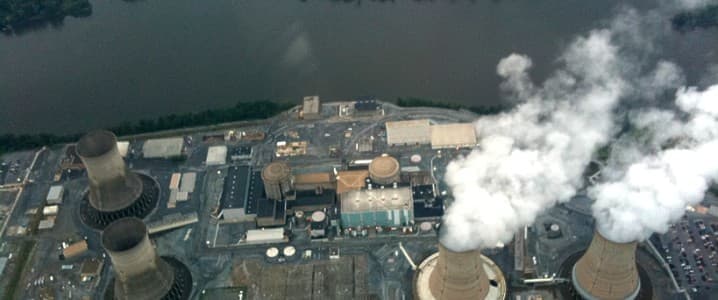Just five years ago, no one could predict the surge in electricity demand that the United States is currently experiencing because of the proliferation of data centers as AI takes center stage in the tech industry. Many, however, predicted that nuclear is due for a renaissance—and it is getting it, in both conventional form and, in the future, in small modular reactors.
A lot of studies have looked into the amount of energy that AI data centers consume, and while their calculations may vary, the overall conclusion does not: AI consumes enormous amounts of electricity to perform he tasks that people and companies use it for: query responses, data analysis, and so on. One study, from Cornell University, estimated the amount of energy generative AI consumes at 33 times that of task-specific software. Other studies have compared this energy to the amount of energy a whole country consumes. In short, AI needs a lot of electricity—and it must be reliable.
Big Tech has made a big deal of its green goals and ambitions, its power purchase agreements with wind and solar power capacity operators, and its plans for reducing emissions. Yet Big Tech cannot deny the fact that data centers run on baseload electricity, not solar power, because they cannot allow downtime of more than a fraction of the time—and it is a small fraction. Enter nuclear as the perfect combination of baseload and low-emission footprint.
Related: EIA Raises U.S. Oil Output Forecast, Warns Oversupply Could Crush Prices
Earlier this year, Meta signed a power supply deal with Constellation Energy, the operator of a nuclear power plant in Illinois that was supposed to be retired in 2017. Microsoft is also in a deal with Constellation Energy, for none other than the Three Mile Island nuclear plant. All Big Tech majors have a nuclear deal or two for their data centers. Yet support for nuclear is growing outside the Big Tech industry as well.
CNBC reported this week that Holtec Corporation planned to build two small modular reactors in Michigan at the site of a conventional—and operating—nuclear power plant. The local business community appears to be thrilled about it as the new facility, to be completed in the early 2030s will create jobs and give the local economy a boost. As long as they get completed, that is.
Small modular reactors have been hyped as the next level in nuclear power evolution. Cheaper, faster to get built, and as safe as a conventional reactor, SMRs have become really popular—in the media. Actual construction of a small modular reactor has stalled. One company, NuScale, began building a small nuclear reactor a while ago but had to stop when the cost swelled and investors scattered. Initially pegged at $58 per MW, the cost of the reactor rose to $89 per MW and construction stopped.
Yet NuScale made a comeback this year, after the Tennessee Valley Authority picked its small modular reactor design to build new generation capacity of as much as 6 GW across seven states. It was the largest small modular reactor deal in history, hailed as guarantee of SMR technology’s viability.
It seems there is growing eagerness for more nuclear capacity across the business community and the household community as well—because electricity costs are on the rise. Here, the finger once again points to Big Tech and its data centers. Bloomberg last month reported that the proliferation of data centers had sent wholesale electricity prices soaring across states and end-consumers are shouldering the burden. “Electricity now costs as much as 267% more for a single month than it did five years ago in areas located near significant data center activity,” the publication reported. If nuclear can bring these costs down—and it can, over the long term—then a nuclear renaissance is a no-brainer.
By Irina Slav for Oilprice.com
More Top Reads From Oilprice.com:
